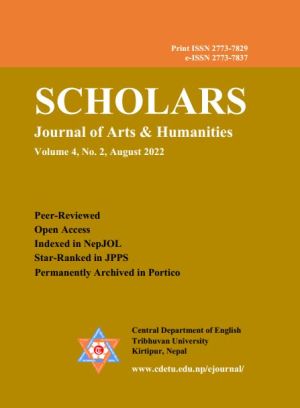Orwell’s “A Hanging” and Kingston’s “Girlhood Among Ghosts”: Narratives of the Imperial World
DOI:
https://doi.org/10.3126/sjah.v4i2.47428Keywords:
Capital punishment, colonial-police, horror, immigrants, DravidianAbstract
George Orwell’s “A Hanging” unfolds sordid realities of the colonial enterprise in South Asia when humans remain subservient to imperial power politics whereas Maxine Hong Kingston’s “Girlhood Among Ghosts” explores some of the issues existent in Asian–American society. These narratives employed in these essays express individual subjective speculations and collective experiences from historical perspectives as the narrators collect the events from their past life in societies different from their original locations. Considering the protagonists’ experience of their past life, this paper exposes the protagonists’ experiences and their sufferings in exile. In this paper, I argue that Orwell’s and Kingston’s narratives of hanging and throat-cut embody a realistic picture of the British imperial police against the native Hindu Brahmin and American hegemony respectively. Orwell’s narrative anticipates anticipate the fall of the British Empire in South Asia that actually took place in 1947 whereas Kingston sheds light on Asian–Americans’ predicament in decline from the world scene.
Downloads
Downloads
Published
How to Cite
Issue
Section
License
Copyright (c) 2022 Central Department of English, Tribhuvan University and Authors

This work is licensed under a Creative Commons Attribution 4.0 International License.
© Central Department of English, Tribhuvan University and Authors




